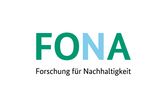Germany is facing energy transition. Electricity from nuclear and coal-fired power plants is a discontinued model according to the current plans of the German federal government. By the end of 2022 at the latest, the last German nuclear power plant is to be shut down, and in 2038 the withdrawal from coal-fired power generation will be completed. The alternatives for cleaner energy production are sun and wind.
While the expansion of wind power plants on land is progressing only slowly, the development of further offshore wind farms at sea, in the German Exclusive Economic Zone (EEZ), is to be promoted. In the meantime, around 1,470 turbines in the German waters of the North and Baltic Seas are now supplying over 7,500 megawatts of electricity. An increase in capacity to 20 gigawatts is planned by 2030.
Which impact do these huge turbines and wind farms have on marine ecosystems? Their construction itself implies a high degree of acoustic disturbance and local intervention in the marine environment. But can this form of energy generation from renewable resources and the protection of the oceans perhaps be reconciled after all? Can wind farms become the starting point for the development of new ecosystems and a refuge and nursery for many species, such as cod, mackerel or brown crab?
SeaUseTip project manager Vanessa Stelzenmüller has been investigating these questions for several years now, together with colleagues from the Thünen Institute of Sea Fisheries and the Alfred Wegener Institute for Polar and Marine Research (AWI). Based on the results of their field research near and within wind farm areas, they want to make recommendations for an optimal design of the turbines in terms of sustainable use. In doing so, their work often resembles a particularly challenging puzzle, the pieces of which must be found and carefully put together to create a coherent overall picture in the end.
On her last scientific cruise with the fisheries research vessel Solea in January this year, Vanessa Stelzenmüller and her colleagues Antje Gimpel, Holger Haslob and Karl-Michael Werner from the Thünen Institute searched for cod eggs. With the help of these they wanted to find out whether cod uses wind farms as spawning grounds. For this purpose, the scientists were allowed, with special permission from the operator, to deploy their plankton nets in the Meerwind Süd/Ost wind farm 23 kilometres north of Helgoland. And they found what they were looking for. Initial analyses of the eggs caught with net, combined with the evaluation of drift models, indicate that at least a third of the eggs come from the immediate vicinity of the park.
Last year, the scientists had examined cod caught in the wind farm for their nutritional status and food spectrum by measuring and weighing them and analysing their stomach contents. This showed that the animals from the wind farm both use a more varied range of food and are better fed than those from outside.
These initial results suggest that offshore wind turbines have the potential to have a positive impact on some species and ecosystem functions. However, this also implies requirements for their placement, construction and above all environmentally sound decommissioning.
If the mighty pylons with their stone embankments on the bottom actually take over the function of artificial reefs, which serve as habitats and reproduction areas for numerous species, fishing could also benefit from this in the long term. This could be the case if the spillover effect would allow the animals to migrate from the parks to the surrounding areas, and they could be fished there.
In January 2020, reporter Benjamin von Brackel from the German newspaper DIE ZEIT accompanied the team of scientists around Vanessa Stelzenmüller on their voyage with the fisheries research vessel Solea and has now reported on it. You can find the complete article (in German) <link https: www.zeit.de offshore-windparks-meerestiere-forschung-nordsee-naturschutz-biologie komplettansicht external-link-new-window external link in new>here.
